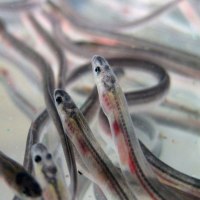How nature-based solutions can benefit freshwater biodiversity

Nature-based solutions are increasingly being adopted by environmental managers and policy makers seeking to address the growing ecological and climate emergencies, both in Europe and globally. Nature-based solutions – such as peatland and river restoration – aim to use natural processes to help tackle socio-environmental challenges such as climate change, biodiversity loss and flooding.
One key element of nature-based solutions is that they are designed to offer clear economic and social rationales for the value of protecting and restoring natural environments. Advocates of nature-based solutions suggest that this helps strengthen arguments over the value of mainstreaming environmental restoration to benefit all our lives.
In this context, a newly-published open-access paper explores whether nature-based solutions can make meaningful contributions to tackling the freshwater biodiversity crisis. Writing in PLOS Water, Dr. Charles van Rees and colleagues highlight how nature-based solutions can offer ‘win-wins’ for nature and society, but emphasise that clear links must be made between their use and priorities for freshwater conservation.
We spoke to Dr. van Rees to find out more about the research.
///
Tell us about your paper: what are the key take-away points, and why do they matter?
I would highlight several take-home points from the paper. First, the notion which inspired the paper itself: everyone – from governments to NGO’s to private consultants – is getting really excited about nature-based solutions (or NBS). And that’s not a bad thing. But as we approach implementation of NBS on a massive scale, we have to make sure we’re doing these projects the right way. Part of the appeal of these projects is ostensibly their potential to benefit biodiversity. However, at the moment, this seems mostly unsubstantiated; people are happy to pay lip-service to what NBS could be doing for biodiversity but in our enthusiasm we have failed to take a critical stance toward these claims. The paper set out to test those claims for freshwater biodiversity, the most imperilled realm of biodiversity, since a great number of NBS address freshwater management issues.
The second take home point is regarding what we found when we started digging into the literature: very little! Although there is an increasing amount written on NBS, there has been very little biodiversity monitoring of NBS projects. Thus, most evidence is indirect, and we had to conduct our analyses largely in a qualitative manner. The major message here is that we need to start rounding up the available evidence on the biodiversity impacts of common NBS, and collecting new evidence as these projects become increasingly mainstream.
The last major take-home comes from our qualitative findings. Namely, that NBS can make big contributions to some, but not all, of the major priority actions for freshwater biodiversity conservation. In other words, they do show great promise, but will not be a panacea. For things like facilitating environmental flows, creating and restoring habitat, and improving water quality and ecological and hydrological connectivity, NBS seem like they could make a major impact, especially if implemented at scale. For other issues, the potential is more indirect and would be appropriate for a supporting role, but we would still need to find ways to specifically and directly address those conservation issues in other ways.
Why is it so important to critically examine the role of NBS in freshwater conservation and restoration right now?
In the US and elsewhere, interest, momentum, and funding for NBS projects are building rapidly. They are an urgently needed solution to many major problems of the anthropocene, particularly dealing with global climate change and water-related existential risks like drought and flooding. At the same time, freshwater biodiversity is in crisis. That makes coming decades, where huge amounts of money are invested into water-management infrastructure, a critical time for freshwater biodiversity. If NBS can be deployed at scale and in ways that support biodiversity conservation goals like those put forth by David Tickner and colleagues, then the benefits could be massive.
Based on your research, do you think NBS deliver on their potential for freshwater biodiversity conservation, whilst also benefiting society?
I think NBS can absolutely deliver on both of the major ‘promises’ that people are excitedly making right now. However, it will require interdisciplinary knowledge integrated across sectors and levels of management – for example, from scientific expertise to local, indigenous, and other traditional expertise – and rigorous monitoring to ensure that this is the case. We see great potential for NBS to contribute to freshwater conservation goals like increasing connectivity, improving water quality, and generating habitat, for example. Other major goals like reducing the impacts of invasive species may be less directly related to freshwater NBS.
In your paper, you link freshwater NBS with six priority actions for freshwater biodiversity conservation. Why was this important to do, and what potential does it offer environmental managers and policy makers?
David Ticker and colleagues’ priority actions, and the complementary, cross-cutting Special Recommendations by myself and colleagues both outline strategic priorities that need to be addressed to ‘bend the curve’ for freshwater biodiversity, that is, slow and perhaps even reverse ongoing declines. In critically examining the promise of NBS for freshwater biodiversity, we wanted to ground their potential contributions to biodiversity conservation issues in a-priori categories of conservation action.
We hope that linking to these important 21st-century freshwater conservation papers and their highlighted priorities will help guide biodiversity research on NBS to focus on topic areas with maximal potential positive impact. I think the major potential for environmental managers and policy makers is in making them aware of what specific contributions they can expect to be making toward conservation goals. In planning and negotiations for projects, it’s important that they know what NBS can and can’t do, and what types of benefits are within the realm of possibility.
Finally, what knowledge gaps and other challenges need to be addressed to better apply freshwater NBS in the future?
The knowledge gaps around NBS and biodiversity are frankly huge. This means that funding must be made available for rigorous scientific monitoring of biodiversity in restored, artificial, and protected ecosystems functioning as NBS. This has a lot in common with ongoing work on novel ecosystems, and papers like our recent framework for monitoring natural infrastructure will be necessary to ensure that we learn as we go, and don’t proceed blindly with burgeoning enthusiasm for NBS. Beyond that, since biodiversity is different everywhere, more regional knowledge is needed to enable successful implementation outside of the areas from which most of the current research is coming.
///















Comments are closed.